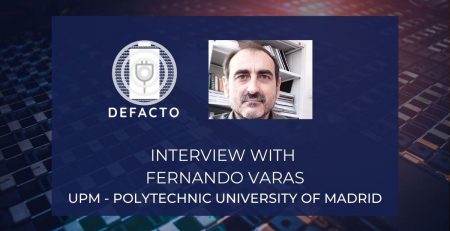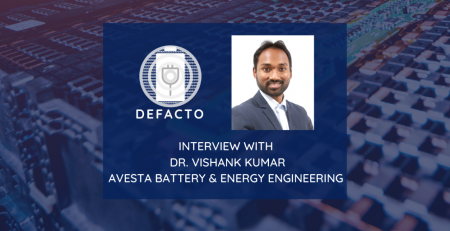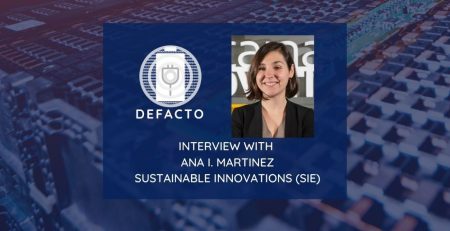“We contribute to the characterisation of the Li-ion battery materials studied in DEFACTO, with special emphasis on the microstructure of both the precursor powders and the electrode coatings” – Interview with CERTH
Nikolas Vlachos, from CERTH speaks in this interview about their main role in the DEFACTO project as well as their expectations within the initiative.
Q: What is the main role of your entity in DEFACTO?
A: The Aerosol & Particle Technology Laboratory of CERTH was invited to join the DEFACTO effort as a result of our association with automotive research and development, which focused on combustion emissions control, and our related capabilities in advanced materials characterisation which include in situ and operando Raman spectroscopy and x-ray microtomography. Therefore, we contribute to the characterisation of the Li-ion battery materials studied in DEFACTO, with special emphasis on the microstructure of both the precursor powders and the electrode coatings. In addition to this initial assignment, the extensive computational treatment of electrode materials at the micro-scale in DEFACTO offered the opportunity for us to bring forward a toolkit of computer programs developed over 10 years ago for very realistic micro-scale simulation of soot particle transport and deposition in Diesel particulate filters, a quite novel approach at the time. The DEFACTO partnership was very welcoming to this suggestion and so we acquired the additional – and perhaps dominant – role of contributing to the validation of the 3-D electrode microstructures produced by partner TUBS, facilitating the transfer of the validated micro-structures to downstream users and exploring the possibility of enhancing the geometric fidelity of the virtual electrodes, by making and incorporating more realistic discrete elements for the active material and carbon black powders.
Q: What are your expectations from the project?
A: In materials characterisation, we are also involved in other Li-ion related projects where we examine battery materials and/or assembled cells. I can say that DEFACTO is our most challenging project so far, in this respect, due to the accuracy and rigour required for generating data that will either be used to build models or to validate models within the DEFACTO simulation framework for the battery manufacturing process chain. Therefore, we hope that DEFACTO will allow us to hone our material characterisation capabilities, especially concerning automotive applications where our partner connections offer the most scope for exploitation. For our virtual materials computations toolkit, which has always benefited from but also complimented our characterisation efforts, we expect DEFACTO to be the perfect opportunity to re-purpose our tools, largely based on basic principles, to Li-ion battery materials and give new life to this quite substantial investment in past effort.
Since we previously did not focus on battery materials simulation, we do not aspire to attain the level of vertical integration in virtual materials simulation that we had in automotive emission control. Rather, we hope that in DEFACTO we can develop some enhanced components, that enhance the fidelity of virtual Li-ion battery electrode computations, and exploit these in collaborations with partners more well established in this field of application.












Leave a Reply